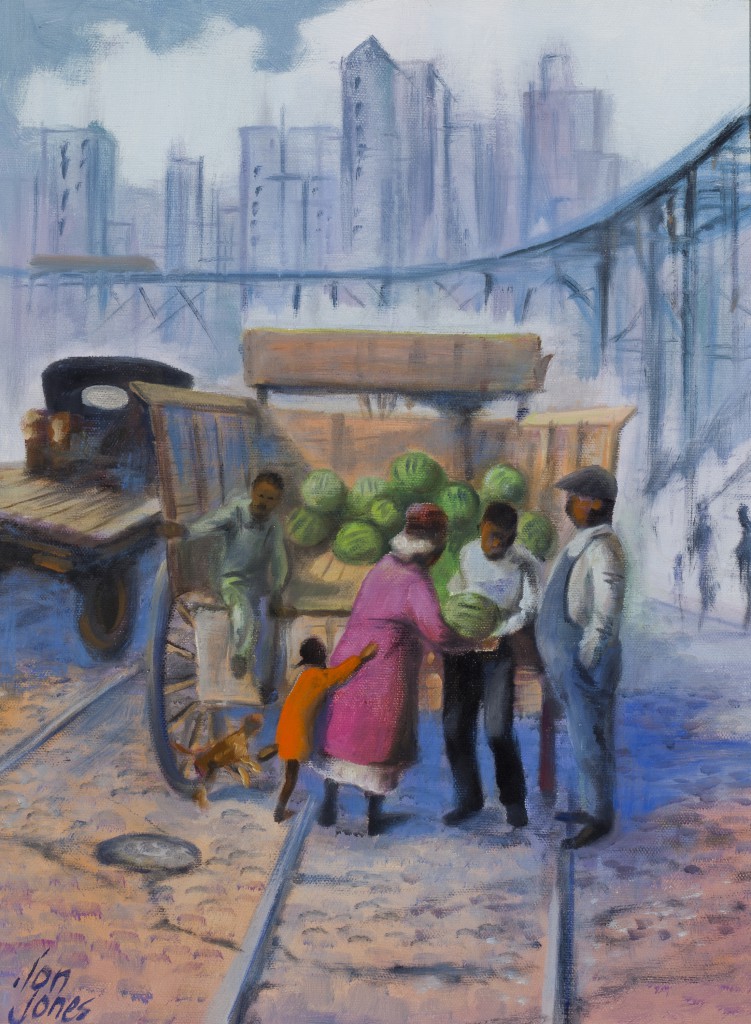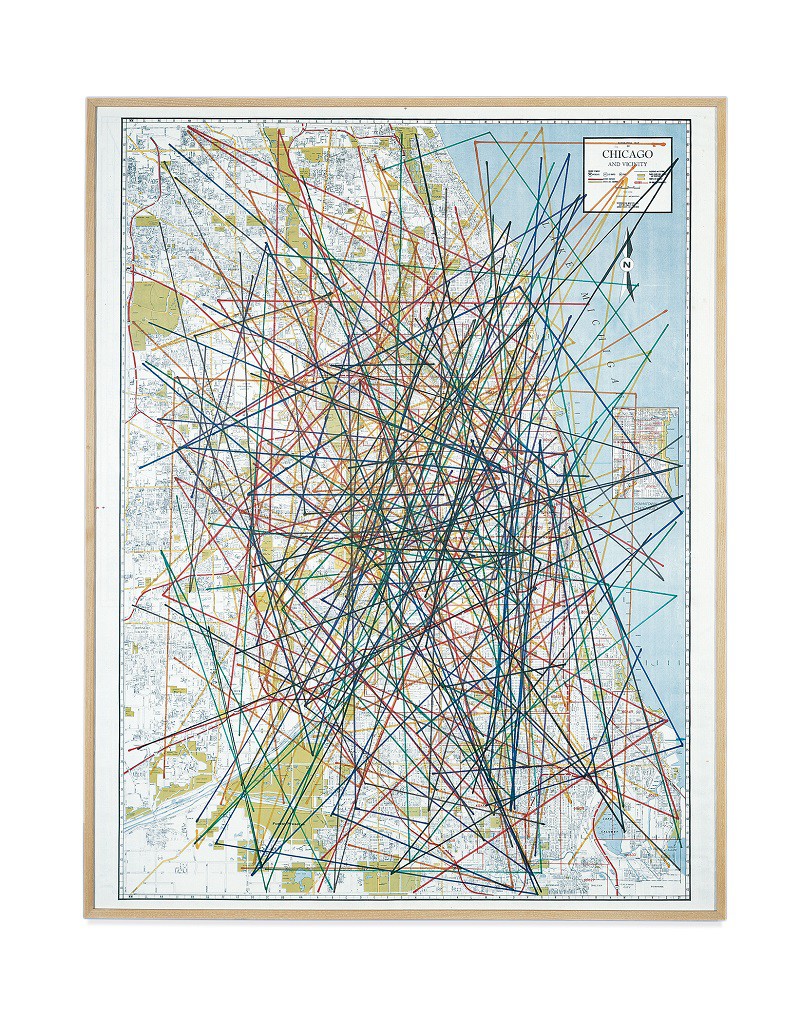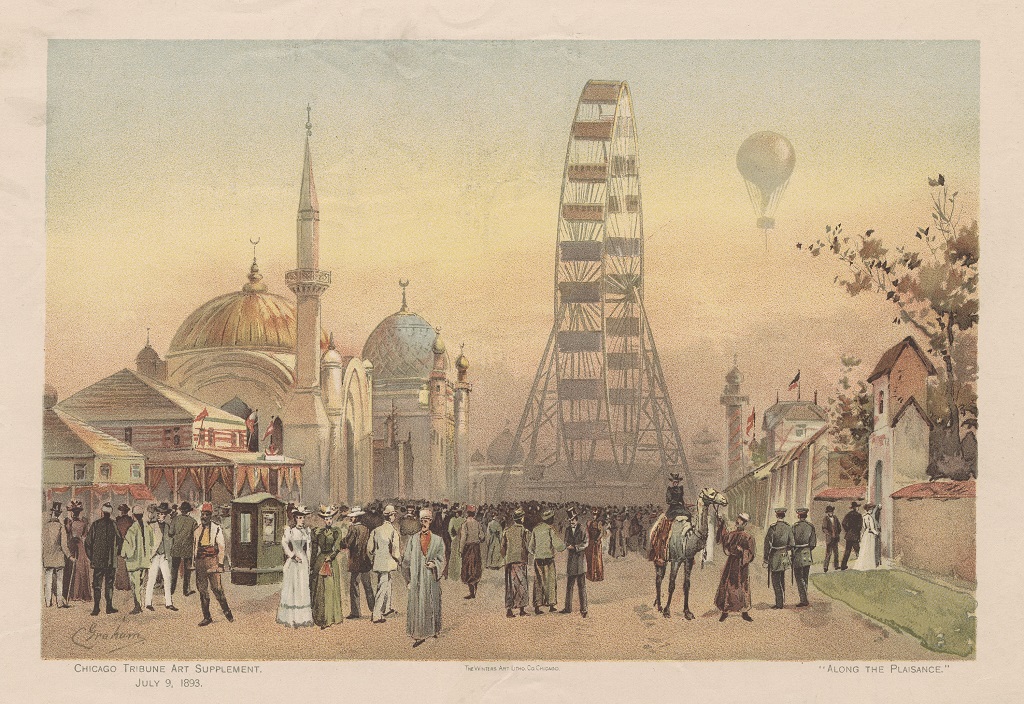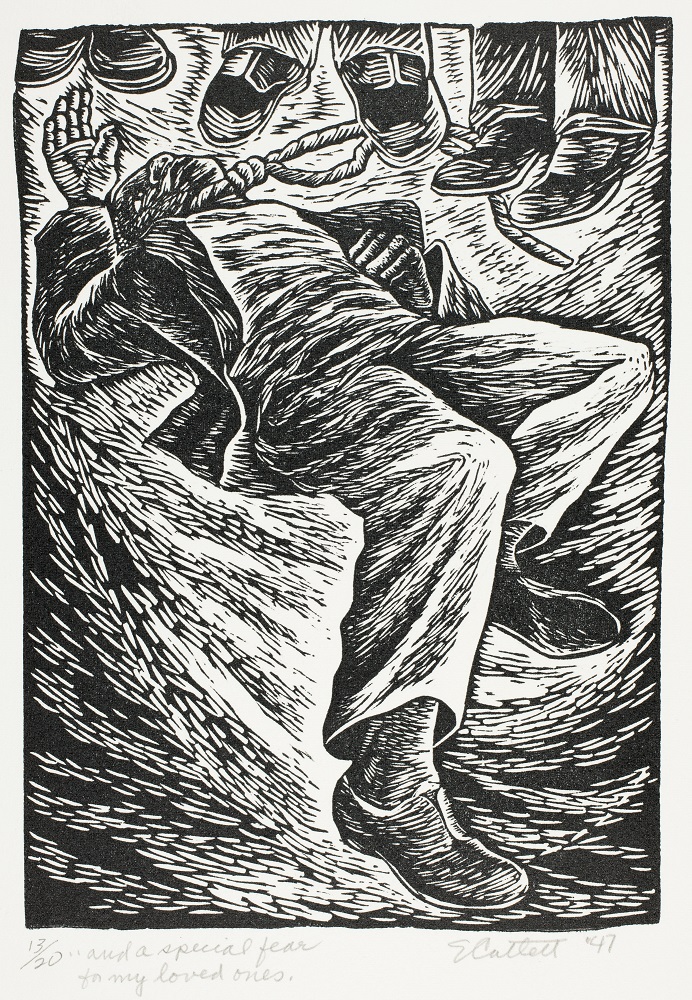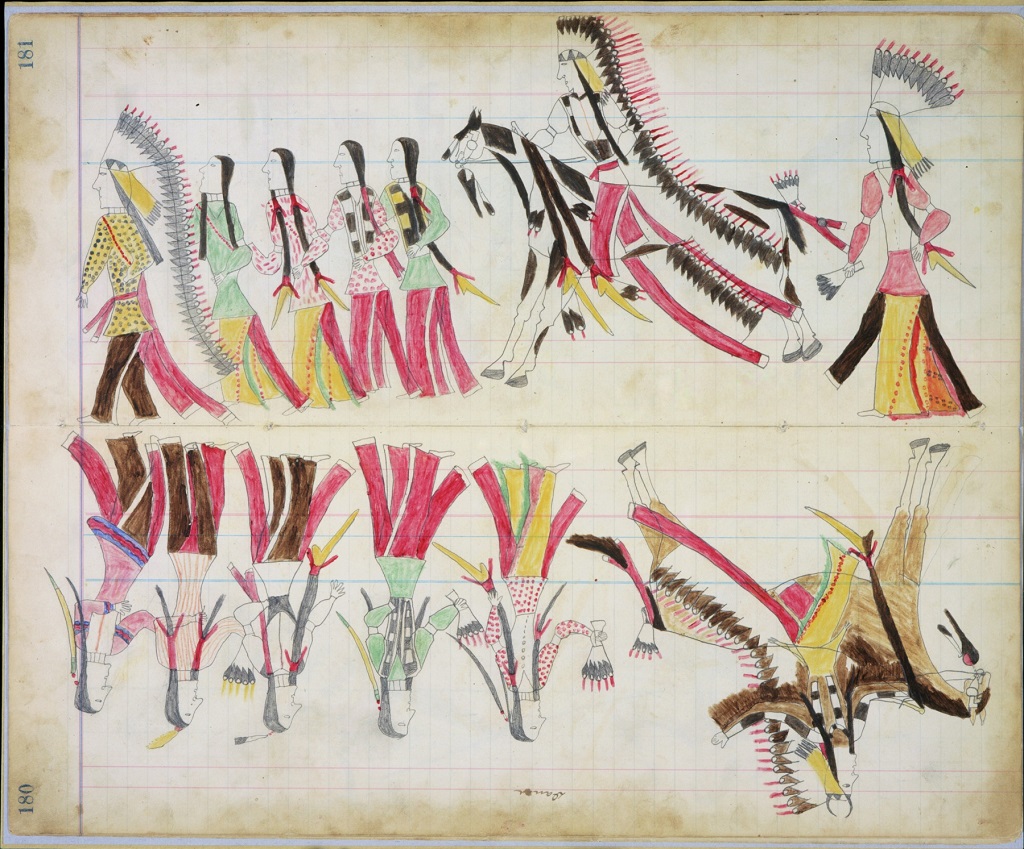Author:
Nevada Montgomery, DuSable Museum of African American History
At First Glance
Does this image look familiar? Which elements resemble things you’ve seen? Notice the group of people at the center of the painting. What kind of transaction is taking place? Now notice the setting. Where do you think this scene is taking place? What details from the painting support your idea?
Read to Build Knowledge
Skylines composed of tall buildings and elevated train tracks have been a common sight in big cities since the late 1800s. But people selling fruit beneath those tracks may not be an everyday sight for many people today. Look closely at the vehicles in this painting and notice their wheels. The wheels on the vehicle carrying watermelons have large wagon spokes. This is not a modern truck–it may have been pulled by a horse or even a person. Many people who immigrated or migrated to Chicago in the 1900s used to sell food and other goods from pushcarts or from pickup trucks like the ones you see in this picture. This practice allowed city dwellers access to fresh food, and it provided cart owners the opportunity to own small businesses that could travel to many neighborhoods, even if they didn’t have the money to open a store.
Pretend that you are in this image and new to a big city. Now, imagine the sound of passing trains, the scent of sweet fruit, and the sight of foods that you used to eat back home. All of this is set against the backdrop of your new city’s skyline. Would you feel comforted? Confused? Hungry?
Not much information is known about why artist Jon Jones chose to depict the scene you see in this painting. It is possible that he painted something he saw or that someone in his family saw during an earlier era, when many African American families migrated to Chicago. During the early 1900s, hundreds of thousands of African Americans left their rural Southern homes and moved to the North in search of greater freedom and opportunity. This mass movement, which began in the 1910s and continued through 1970, is known as the Great Migration.
Analyze and Interpret
- What might the colors used by Jon Jones say about his feelings toward the practice of selling goods from the street?
- Compare Jon Jones’s use of artistic techniques in the background and in the scene at the center of this image. Why do you think he represented these two sections in the way he did? What might this contrast communicate?
- Do you think this painting shows something that Jon Jones observed in his own life? Did the artist record an actual scene he witnessed in the city or do you think he created an imagined scene that brings together the urban and the rural and/or the past and the present? Use details in the painting to support your answer.
- What conditions may have prompted immigrants to sell goods from pushcarts?
- What can this image tell us about the ways immigrants adapted to American city life?

